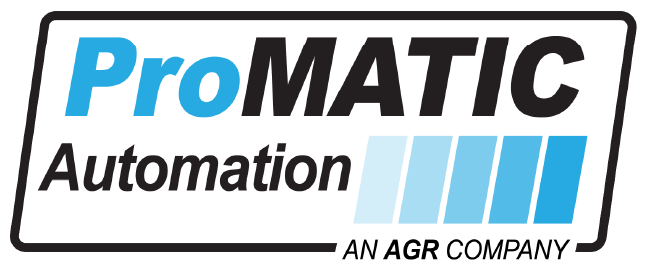Considerations in Machine Safety
Choosing the right automation company with experience in designing safety into your equipment can have big paybacks. Safety standards change as the demand for factory automation continues to grow. As a machine builder, ProMATIC Automation understands the importance of designing safety into the equipment we supply.
When considering a process to automate, performing a safety risk assessment needs to be a top priority. It is never to early to think about safety in the design process but a practical starting point for safety considerations for a new automation project is during the layout phase. When the major components of the system are being selected, consideration should be given to how they will interact with each other and the environment they are being used in.
Click Here to continue article.
ProMATIC Automation is capable of automating a wide range of processes. We have nearly 20 years of experience automating these processes across a diverse cross section of industries like Automotive, Bio-medial, Manufacturing, Industrial, Heavy Construction, Commercial/Industrial Lighting, Hydraulic Power and Plastics Injection Molding.
- Assembly
- Inspection
- Dispensing
- Machining
- Electrical Testing
- Palletizing
- Locating
Watch this video to see an overview of the types of projects ProMATIC Automation has automated.
The Safety Process
A formal risk assessment can only be performed once the mechanical and electrical design reviews have been completed. SISTEMA (Safety Integrity Software Tool for the Evaluation of Machine Applications) software is one tool used to evaluate safety circuits. It is not just the component parts of the safety circuit that need to be verified, it is the safety circuit as a whole.
Industry standard worksheets are provide by many of the manufactures of safety components. A few examples of components are PLC’s (Programmable Logic Controllers), Relays or Light Curtains. The worksheets provide the information required by SISTEMA to calculate a Performance Level (PL). Using this detailed method of evaluating each component will ensure that the end product meets the required PL. Choosing mainstream suppliers such as Allen Bradley or Siemens for the safety components will ensure that worksheets are readily available when inputting date into SISTEMA.
When a Performance Level has not been meet, the safety system must be modified. Additional or different components may be required to ensure redundancy in the safety circuit.
Before committing to a machine builder for you next automation project, talk to them about their safety process.
Advantages of Designed Safety
Safer Equipment – Keeping safety at the forefront will result in engineers recognizing the potential hazards which could easily be overlooked otherwise.
Speed of Completion – When safety is kept in mind from the beginning of the project it will save time at the end of the project. Knowing the safety requirements for a given machine, allows the engineers to design to well defined goals. This clarity will result in a shorter design phase and a reduced number of change orders during assembly.
Aesthetics – Everyone wants to be proud of their equipment. It is obvious when a machine has had a safety feature added as an after thought.
Cost Savings
Change Orders – Most medium to large corporations have a machine specification that includes a safety spec. To often the safety engineer is not involved in the early stages of the machine layout and design. This may be a costly mistake that leads to multiple change orders. If a safety issue surfaces after a machine has been built, there is more to corrective action than swapping out components.
- Frequently there are changes to the machine structure.
- Additions or modifications are required to accommodate the new components.
- Additional wiring in of new components.
- Electrical and mechanical drawing updates.
Even small change orders will cost hundreds of dollars in labor and delay project completion. If the safety issue doesn’t surface prior to installation at the customer’s facility, labor cost will skyrocket to correct the problem.
Liability – Smaller manufactures should be acutely aware of the safety of their equipment too. While they may not have a formal safety specification for equipment, documentation should be created and retained as proof of a safety review of each piece of equipment. A single injury could bankrupt a company if ruled as non willful negligence.
Post Install Safety Validation – Due to insurance requirements, some facilities have been required to go back and have their machines validated for safety. This is an expensive process.
Summary
Treat machine safety as a process. It is just as important as the reliability of machine.
Every machine will require a certain level safety. The benefits to a well designed safe machine, out weigh the cost of trying to cut corners.
Safe machines do not happen by accident.







